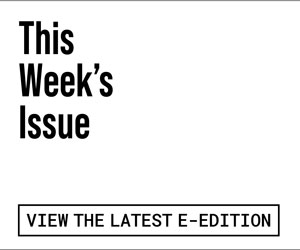County passes housing element—what does this mean for affordable housing in Marin?
by Peter Seidman
As the year rolled to an end, the county put a period on the next round of its housing element. The Board of Supervisors earlier this month on a unanimous vote approved the element, which guides housing development through 2023. Marin residents, however, remain far from unanimous about affordable housing and controlled development.
The meeting in which the supervisors approved the housing element lacked the viscous attacks and raucous behavior that had marked housing debates in the past few years. A lack of emotion-based vitriol may be a sign that county residents are ready to engage in a rational debate about how Marin should continue on its slow-growth path.
The county housing element that supervisors approved points the county in that continued slow-growth direction. Affordable housing advocates note that the county needs many more affordable housing units for its younger residents, its older residents, service workers who earn significantly less than the median income and the commuting workforce, whose members could become residents if they could afford housing in the county.
The latest housing element controversy, one that preceded the meeting during which the supervisors approved the element, concerned the county’s position, as outlined by county staff, that Marin should put more housing into the housing element than the state requires.
The suggestion almost immediately elicited a response that the county wanted to clear the way for rampant development, to get in bed with developers. The debate rose a few octaves after those allegations. The county explained that although the state requires only 185 housing units through 2023, potential development sites listed in the element might never be built, leaving the county with the task of finding alternate sites to meet the 185-unit mandate. Including more housing units than actually required gives the county a safety valve. If the county had enumerated only 185 units, and if, say, a developer could not build on one or more of the sites on which some of the units were located, the county would have to scramble to meet the state mandate, with possible negative consequences. Better safe than sorry was the thinking.
Although that does not satisfy the don’t-trust-government contingent, supervisors agreed with the concept. They did not, however, approve the full complement of housing units in the element as county planners had envisioned.
The board took the 419-unit proposal that had come from planners and cut it to 378 units. In that total number, the element as approved calls for 210 low-income units, 70 moderate-income units and 98 market-rate units. That’s for the entire unincorporated areas of the county through 2023. Hardly an earth-shattering number, say housing advocates. The number will not change life as we know it, as some anti-development proponents posit. Still, it’s an addition to the county’s housing stock, and it does add more below market-rate units than market-rate units.
Included in the 378 total number of housing units are 72 low-income and 10 market-rate units in Marinwood Plaza, the proposed development that triggered an eruption of the housing debate and led to the ousting of Supervisor Susan Adams, who has been an advocate of the project. She attempted to work with the community, with developers and planners, to create a project acceptable to everyone early in the planning stages. She said a transparent process from the start could result in a new kind of planning strategy for the county. But in the end, the strategy opened the process to raucous community meetings and gave her political opponents a chance to galvanize against her.
Also included in the approved housing element are 100 low-income units, 50 moderate-income units and 71 market-rate units in Silveira-St. Vincent’s; 15 low-income units in Marin City; 10 moderate-income units in Fairfax; and eight market-rate units in Novato.
Giving a nod to the suggestion that the county could go at least a ways toward meeting an affordable-housing need by encouraging second units, the housing element calls for 40 second units, 21 of which would be low-income, 10 of which would be moderate-income and nine of which would be market-rate.
That’s “would be” because although the county (or a city) puts units in a housing element, the designation just puts the units on a list of possible housing sites. All zoning requirements remain intact. The housing units in the element already are zoned. And any design review procedures for actual construction remain in force, as do planning requirements and strictures. Public meetings—and public debate—about possible housing units also remain, and will be on the agenda should developers craft a proposal for units in the housing element.
The county, supervisors and staff assured residents that any development proposal that gets submitted for any of the sites in the element will go through the gauntlet of approval for an ultimate decision.
The county and all Marin cities must submit periodic housing elements. They invariably trigger the argument that the state and its regional agencies are imposing their will on local jurisdictions. To some extent, that’s true. But there are reasons for the process, which is complicated and often misunderstood.
The Association of Bay Area Governments (ABAG) formed in 1961 when a majority of the cities and counties in the Bay Area agreed to join. It was the first council of local governments in the state. The formation was an outgrowth of a call the Bay Area Council made to resurrect a 1946 proposal to empower a regional agency to buy and operate the Bay Area’s major airports, seaports and bridges.
Local governments began looking at the possibility of creating a force that would advocate for their interests. That led to the birth of ABAG.
The housing element process starts at the California State Department of Housing and Community Development, which mandates that regional government councils assign housing requirements to local counties and cities. ABAG has jurisdiction over the nine Bay Area counties and the cities within those counties that are members of ABAG. (Corte Madera withdrew in protest over the number of housing units it was asked to include in its housing element.)
ABAG allocates a Regional Housing Need Determination (RHND) for local entities. Sometimes known as a “fair share housing allocation,” RHND numbers are issued at ABAG periodically based on projected job and population estimates.
How ABAG reaches its conclusions and sets its projected housing numbers involves a variety of modeling tools, according to Hing Wong, senior regional planner at ABAG. The tools include census data and financial data as well as employment statistics. About every two years, he says, ABAG creates a “projection forecast.” Based on those projections, ABAG allocates how many new housing units will be needed in which communities. The idea is that as part of the Bay Area, each community, each county, should create its fair share of housing.
The ABAG numbers must be incorporated into each jurisdiction’s housing element, which is part of each jurisdiction’s general plan. Housing elements are the only part of a city or county general plan that must receive state certification. If a city or county fails to meet housing targets, the state can grant funding. A city or county that fails to meet housing goals also can be vulnerable to court challenge. But if a community can prove that it has made a good-faith effort to meet housing numbers, that sometimes has been enough for the state, even if the community fails to meet the housing-need numbers.
The passage of SB 375, which ties development and transportation planning, aims to persuade communities to consider climate change and the impacts of regional planning, with a particular emphasis on reducing automobile travel. Among other mandates, the bill relaxes state air quality requirements for housing projects that meet goals for reducing greenhouse-gas emissions. The mandates include giving homebuilders incentives to develop higher-density projects near transit routes. Opponents find particular distaste in those measures.
That’s what caused a furor in Marin. Opponents say that increased density development along transit corridors, as in Marin Highway 101, will not increase the number of people who give up automobiles and will not reduce greenhouse-gas emissions. Proponents of the strategy obviously disagree.
Whatever the stand on emissions, it’s hard to argue that older adults, as well as young adults just starting out, may like to live in a higher-density development close to transportation and shops, giving them a different lifestyle than the traditional single-family, white-picket-fence paradigm. If people live within walking distance of the grocery store, would they drive? Even if added housing along the transportation corridor reduces greenhouse-gas emissions by an unappreciable amount, the added diversity of housing options for a changing population would benefit the county, say housing advocates.
It can be done without changing the essential character of the county by identifying appropriate locations and maintaining strict planning and design oversight. That’s not what happened in Corte Madera. The approval of the infamous WinCup development created a poster child for housing opponents. Marin doesn’t want a “WinCup South” and a WinCup North” could have been a rallying cry. But the WinCup project is a singular example of planning gone wrong—not a blueprint for widespread lifestyle destruction.
Higher-density housing can be done with a sensitive hand on the drafting board and an even more sensitive eye toward community style. A county like Marin should be an example for superlative design. (In reality, WinCup looks much better now that a new exterior treatment has covered a skeletal structure.) Higher-density projects can be stepped back into a property, giving the design the feeling of a single-family project. Many other architectural options can help a project fit in with the surrounding environment. It just takes vision.
Opponents of increasing the housing stock in the county continue to refer to higher density along the transportation corridor as “stack and pack.” The denigrating term is a remnant of the prejudice that first erupted when ABAG came to the county with housing-need numbers. “Alphabet agencies” is another code term opponents use to impart the belief that the state imposes its will on counties and cites, and that especially includes ABAG. If residents of the state want to abolish the process of setting housing-need numbers, they must do it in the halls of government in Sacramento, not in the halls of ABAG.
Proponents of higher densities along the Highway 101 corridor say that places like downtown San Rafael are appropriate for some development. The county housing element is a good start to the discussion of where higher-density development is appropriate. The debate will continue as developers propose actual projects. It’s a tough and important debate, one in which both sides should recognize the sincerity of the opposition.
Before the meeting during which county supervisors approved the housing element, dueling petitions highlighted the split in Marin over housing, higher-density development and affordable housing. One petition from opponents; one petition from proponents. On an optimistic note, there was a noticeable reduction in the volume of the public response that led up to the vote.
While the housing element gives the county—and its residents—a place to start a renewed debate as actual projects come up for consideration, the realties of housing and finance should set the stage. Although second units and infill are alternatives preferred by many, there just aren’t enough second units to satisfy demand. Developers need a certain amount of market-rate units to help make an affordable project possible. That means higher densities.
Unless current Marin residents want to continue living in a county in which their parents and their children can no longer live because of reduced housing options, Marinites must consider, and propose, realistic alternatives. Affordable housing developments can be designed as acceptable—even welcome—additions to the communities strung along the Highway 101 corridor with the proper design and planning oversight.
All it takes is compromise.
Contact the writer at pe***@ps******.com.







